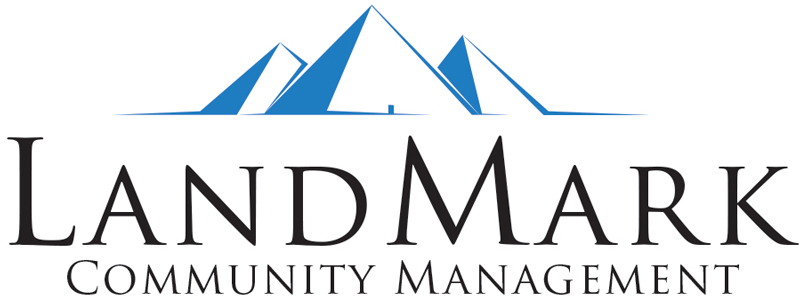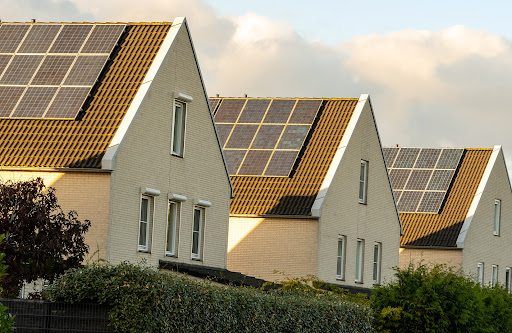Sustainable community management is not a new concept in the industry. While many homeowners associations have already gone green, countless more have yet to take on the challenge. The benefits of sustainable communities, though, are quite apparent.
What Is Sustainable Community Management?
Sustainability is a hot topic in many industries, including among HOA communities. Homeowners associations are no strangers to unsustainable practices. With strict landscaping guidelines and architectural standards, HOAs are often guilty of excessive water use and blocking the expansion of solar energy in modern homes.
As climate change becomes more drastic each year, everyone should do their part to mitigate its effects. One way to do that for HOA communities is through sustainable community development.
A sustainable community manages its operations to meet its needs without depleting resources for future generations. Sustainable community management is simply a method of managing an HOA with sustainability as its core focus. While this is not a new concept, it is something that many associations struggle with.
Importance of Sustainable Practices in Community Management
Here are the benefits of practicing sustainability in a community.
1. Save Money on Costs
Energy-efficient appliances and lighting not only help the environment but can also save the HOA money. Homeowners who follow suit can also benefit from saving on their utility bills. While energy-efficient equipment does cost money, it is an investment that will quickly pay off.
2. Promote Better Health
Green initiatives can help foster better health among residents of the community. Initiatives such as community gardens and promoting public transportation can greatly reduce air pollution in the neighborhood. Residents can then look forward to their morning jogs or walks without inhaling smoke.
3. Improve Resident Engagement
Sustainability projects benefit both the homeowners and the association. These projects can improve community participation as residents volunteer their time and services to make them successful. This, in turn, can instill a sense of community that is often difficult to engineer. Some examples of sustainability projects include recycling programs and clean-up days.
4. Contribute to a Greener Community
Sustainability efforts can minimize your association’s carbon footprint and environmental impact. This results in the protection of natural resources and the mitigation of climate change. While it is true that a single HOA’s efforts can’t stop climate change altogether, the effects can be great when communities across the country do their part.
5. Enhance Property Values
Communities that take a proactive approach to sustainability tend to be more desirable to potential homeowners. This is particularly true for younger generations, such as millennials and Gen Z, now gaining significant buying power. If you want to attract residents and preserve property values at the same time, going green is a good way to do that.
How to Implement Sustainable Community Practices

When it comes to sustainable practices, there are many avenues worth exploring. Your HOA board, though, must carefully research which initiatives are the most realistic and relevant to your association.
Here are some simple yet impactful practices to employ in your journey to sustainable community management.
1. Educate Residents
The first thing your board should do is educate residents. Let them know how they can contribute to a greener community.
Residents can invest in energy-efficient appliances and lighting and utilize water conservation techniques. They can also use public transportation to reduce their carbon footprint. Other alternatives include bicycles, electric vehicles, or carpooling.
You can include these tips in your monthly newsletter or discuss them at your next board meeting. Your HOA may also want to start sustainability programs and ask residents to volunteer.
2. Conserve Water
Homeowners associations can also practice water conservation, not just during summer. This not only helps the environment but also saves money on water bills. An HOA can invest in water-saving equipment such as smart sprinklers and rainwater capture technology.
3. Offer Recycling Opportunities
Homeowners may want to recycle their trash but need more time to bring their recycling to an off-site location. Your HOA can bridge this gap by providing recycling bins within the neighborhood.
First, make sure to educate residents about recycling. Not everyone knows what types of wastes are recyclable. Then, schedule a regular curbside collection service for all recyclables. You can also establish drop-off stations in common areas.
To encourage engagement, residents can volunteer to help plan the recycling program. You can even organize recycling events where homeowners and outsiders can bring their recyclables for one big drop-off.
4. Cut Back on Paper Use
Limiting paper usage is another way to go green, and it is also easy. Associations use much paper in their daily operations – from printing out notices and announcements to weekly newsletters and invoices.
Consider switching to electronic communication if your state laws and governing documents allow it. Make community documents and records available for download on your website. An HOA management software can also come in handy here. Reducing paper use contributes to sustainable community management and saves you money in the long term.
5. Use Eco-Friendly Landscaping
Many HOAs require homeowners to maintain their lawns and keep them green. However, this can lead to excessive water use, especially during summer. While landscaping boosts curb appeal, it should not come at the expense of the environment.
Commit your HOA to water-friendly landscaping. Use drought-resistant plants to help conserve water. Alternatively, you can invest in hardscaping or xeriscaping.
6. Invest in Solar Power
Solar energy is the future, but many associations still prevent homeowners from installing solar power systems. Consider allowing solar collection devices while implementing reasonable restrictions to preserve appeal and property values. Homeowners are not the only ones who can use this technology, too. Your HOA can also invest in solar energy devices and install them in common areas.
The Bottom Line
Clearly, sustainable community management poses several advantages. While the shift to sustainable practices may come as a challenge initially, you’d be surprised at how easy it is to adapt. Once you start reaping the benefits, your community will be glad it made the switch.
Landmark Community Management can help Texas condos and HOAs with sustainability. Call us today at 512-569-5527 or contact us online to learn more!


